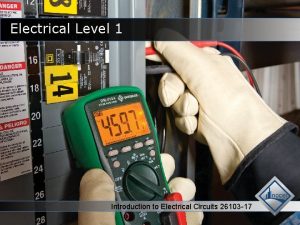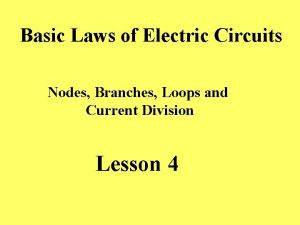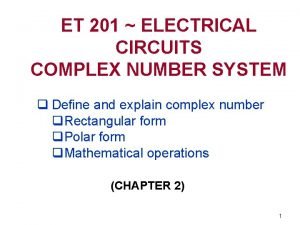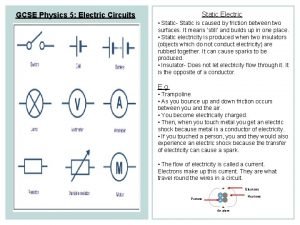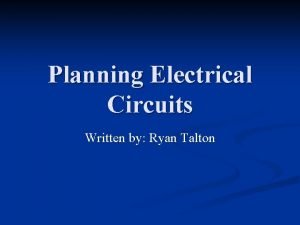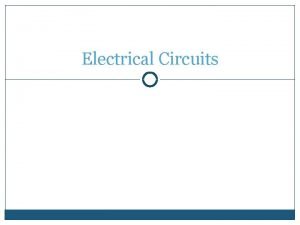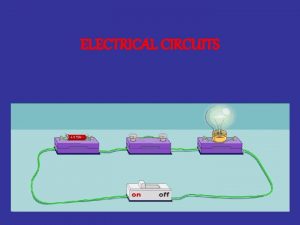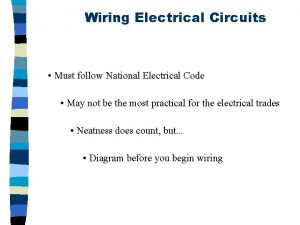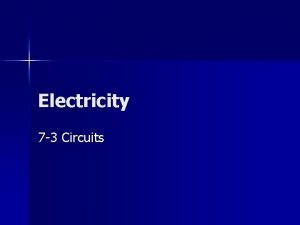Introduction to Electrical Circuits All electrical circuits must







- Slides: 7

Introduction to Electrical Circuits • All electrical circuits must have three components • 1) Must have a source of electric potential (volts) that provides the energy (pressure) to the circuit • 2) Must have a conductive path (wire) • 3) Must have a potential reduction device (electrical load), some device that converts electrical energy into some other type (motion, heat, light, sound)

Schematic Diagrams and Electrical Symbols

Ohm’s Law • The king of the electrical equations • Describes the relationship between 3 electrical measurements; Electric Potential (V), Current (I) and Resistance (R)

Ohm’s Law I=V/R • I = Current = The movement or flow of charge measured in Amperes (Amps) where 1 Amp = 1 C/Sec • V = Electrical Potential = The amount of potential created by the separation of charge measure in Volts (V) where 1 V = 1 J/C • R = Electrical Resistance = The opposition to current measured in Ohms ( ) where 1 = the amount of resistance that allow 1 amp when connected to one Volt • Example

Electrical Power • Power is the rate of doing work • Electrically it represents the rate in which energy is consumed, measured in Watts where 1 Watt = 1 J / Sec • 100 Watts = 100 J /Sec • 1 KW = 1000 J/sec

Three Expressions of Electrical Power 1) P = V x I 2) P = I 2 x R 3) P = V 2/R All power calculations must be in the base units of Volts, Amps, and Ohms, all answers given in Watts, Kilowatts, or milliwatts Examples

Definitions of Current • Direct Current (DC) – Current only flows one direction, usually connected to a battery – Electron Current – electrons flow from (-) (+) – Conventional Current – “positive holes” flow from (+) (-) – Example - the movie theater model of current. • Alternating Current (AC) – current osculates back and forth with a specific frequency (60 Hz), usually connected to a generator
